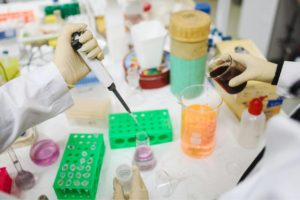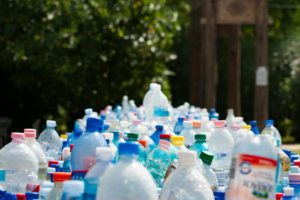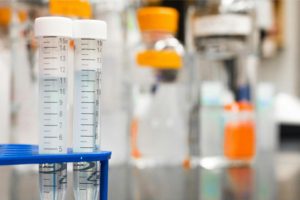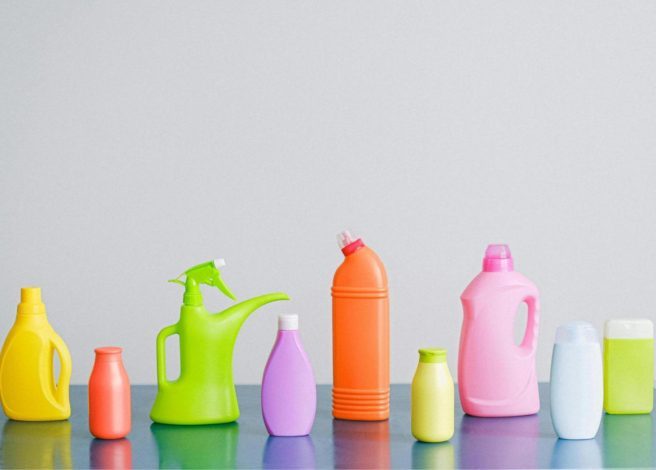At a Glance
- Forever chemicals (PFAS) have persisted in some packaging barriers, raising concerns over chemical migration into food.
- Use of PFAS-coated paper and fiber containers is declining, as brands move toward safer water- and oil-resistant alternatives.
- Testing, certification, and supply chain transparency are critical to ensure PFAS-free packaging.
- Innovative barrier solutions without PFAS — like bio-based coatings — are gaining traction in the food industry.
It’s not hard to imagine: You’ve spent years building a successful food business with loyal customers who trust your products. Then, one day, a major news story breaks about harmful chemicals found in food packaging just like yours. “Is this real?” you ask yourself in a panic. Within hours, your inbox fills with concerned messages from customers. Distributors start asking about your packaging safety. A local reporter calls, wanting a statement on “forever chemicals” in your products, even though you might not use them.
This might sound like a scary campfire tale told by food industry pros, but it’s real. Food businesses nationwide face this challenge as awareness of PFAS chemicals increases. “Forever chemicals” are a major worry for consumers, businesses, and regulators.
This week, we sat down with Conor Carlin, President of Clefs Advisory LLC. Operating at the nexus of packaging and sustainability, Conor served as President of the Society of Plastics Engineers (2024) and is a former General Manager for ILLIG in North America. His expertise spans materials, packaging technologies, policy, commercial strategy, and market intelligence.
Let’s examine these “forever chemicals” a bit further. Knowing these substances is crucial for a food business professional. They can affect your operations and are vital for your company’s survival and reputation.
What Are PFAS?
 PFAS, or per- and polyfluoroalkyl substances, are chemicals that do not occur naturally in the environment. They were specifically designed to resist grease, water, and oil. Their long name is tricky, so we’ll stick to the shorter version.
PFAS, or per- and polyfluoroalkyl substances, are chemicals that do not occur naturally in the environment. They were specifically designed to resist grease, water, and oil. Their long name is tricky, so we’ll stick to the shorter version.
Carbon and fluorine form the backbone of these substances, which makes them very resistant to degradation. This extraordinary durability is both PFAS’s greatest strength and its most concerning characteristic. PFAS are different from many other compounds. They don’t break down easily. Instead, they stay (or bio-accumulate) in the environment and our bodies for years or even decades. That’s why we call them “forever chemicals.” Let’s be clear: this is not good.
Where Do PFAS Come From?
PFAS have been used in industrial and consumer products since approximately the mid-20th century. These synthetic chemicals were made for their unique properties. They are not found organically in nature. Note: They are “found” in nature, however, mainly due to products entering the environment. That’s right: ‘twas humans and our foolishness that put these chemicals into the environment!
Today, PFAS can be found in a wide range of products:
- Paints and cleaning products
- Non-stick cookware
- Firefighting foams
- Carpets and furniture
- Electronics and circuit boards
- Certain types of food packaging
In food packaging specifically, PFAS may be used in:
- Grease-resistant paper and paperboard
- Some molded fiber products
- Some types of food wrappers
- Microwave popcorn bags
- Pizza boxes (so very upsetting)
- Food processing equipment
PFAS can be found in very small quantities in products like the inside of milk cartons to provide leak resistance. These applications highlight why PFAS matter to food businesses — they may already be part of your packaging or supply chain.
The Very Real Dangers of PFAS
A concerning aspect of PFAS lies in their persistence and potential health effects. Scientific research continues to evolve, but several studies have linked PFAS exposure to:
- Increased cholesterol levels
- Changes in liver enzymes
- Decreased vaccine response in children
- Increased risk of certain cancers
- Thyroid hormone disruption
- Fertility issues
Many studies show these substances can harm human health, especially their persistence in water. High-profile legal cases have also highlighted this issue. The full health risks are still being studied, but the evidence has led to more regulatory scrutiny.
Where Do PFAS Exist in Food Operations?
For food businesses, PFAS exposure risks exist throughout the supply chain: 
- Food packaging: Some pulp or fiber takeout containers, food wrappers, and bakery papers have special grease-resistant coatings to prevent oil and grease from soaking through.
- Processing equipment: PFAS can be found in non-stick and friction-reducing uses in processing equipment.
- Water supply: Some water sources have PFAS contamination. This comes from industrial discharge or other environmental sources. This can lead to cross-contamination as the water can migrate into food products during production, posing risks to food safety and human health.
Food packaging makers are particularly worried about PFAS in relation to recycled materials. While PET plastics are unlikely to contain PFAS, certain HDPE containers could be problematic. HDPE is often used to store and transport hazardous materials. This includes items like insecticides and gasoline. Fluorinating these containers helps protect them from corrosive contents. However, this process may create PFAS compounds. If these containers enter the recycling stream, they can become a source of contamination.
Can You Test Packaging for PFAS?
Testing for PFAS presents significant challenges, particularly for smaller operations. Unlike some contaminants, PFAS detection typically requires specialized laboratory equipment and expertise with companies such as Pace Labs or Intertek, to name a few.
Measuring PFAS requires specialized laboratory tools, such as spectroscopy, filtration, and microscopy. Many food businesses lack this equipment, so sending samples to specialized labs is usually the best option.
Common testing approaches include:
- Sending samples to specialized third-party laboratories
- Water testing for operations with private wells
- Supply chain verification through documentation from suppliers
- Utilizing certified PFAS-free materials
Many businesses depend on suppliers’ certifications and regulatory compliance documents. This reliance is due to the high costs and complexity of testing.
Should Food Businesses Be Concerned About PFAS?
The short answer is yes — but with perspective. PFAS are a growing concern. Regulatory standards are evolving, and more consumers are learning about the risks.
The principle that “the dose makes the poison” is relevant here, emphasizing that trace amounts may present limited risk. The total impact of PFAS exposure from different sources heightens risks for food businesses. They are directly linked to what consumers eat.

States like California are already implementing PFAS rules, and the FDA is investigating these chemicals more closely. Because of this, companies must pay attention to regulations. Beyond compliance, the reputational risks of PFAS contamination could significantly impact consumer trust.
Practical Steps for Food Business Professionals
- Audit your packaging and materials: Identify any potentially PFAS-containing materials in your operation.
- Request documents from suppliers: Ask for certificates that confirm they are PFAS-free or meet current regulations.
- Consider alternatives: Explore PFAS-free packaging options.
- Stay informed about regulations: Monitor evolving FDA guidelines and state-level regulations on PFAS. Attend conferences such as “PFAS in the Plastics Industry” hosted by The Society of Plastics Engineers.
- Develop a testing protocol: Establish a reasonable schedule for testing high-risk materials.
- Train staff: Ensure your team understands PFAS risks and mitigation strategies.
- Communicate transparently: Be prepared to address customer concerns about PFAS in your products.
Confronting the PFAS Challenge Head-On
More people are learning about “forever chemicals.” Food businesses that address PFAS issues will have a better legal and competitive advantage. This issue requires serious focus from every food business professional.
The irony isn’t lost on us that these chemicals designed to repel unwanted substances are now themselves the unwanted substances we’re trying to repel. Unlike the non-stick pans coated with PFAS, this issue isn’t one that your business can simply slide away from. 
Knowing what PFAS are and where they come from helps you understand their impact. This knowledge lets you protect your customers and your business from this growing issue. In the food industry, your reputation for quality and safety should endure. However, the chemicals in your packaging should not stick around.
Your best solution matters most to Inline Plastics — even if that means recommending options outside our services. Reach out anytime with questions. We’re here to guide you.
Would you like to know more about Conor Carlin and his work at Clefs Advisory LLC? Connect with him on LinkedIn today.

